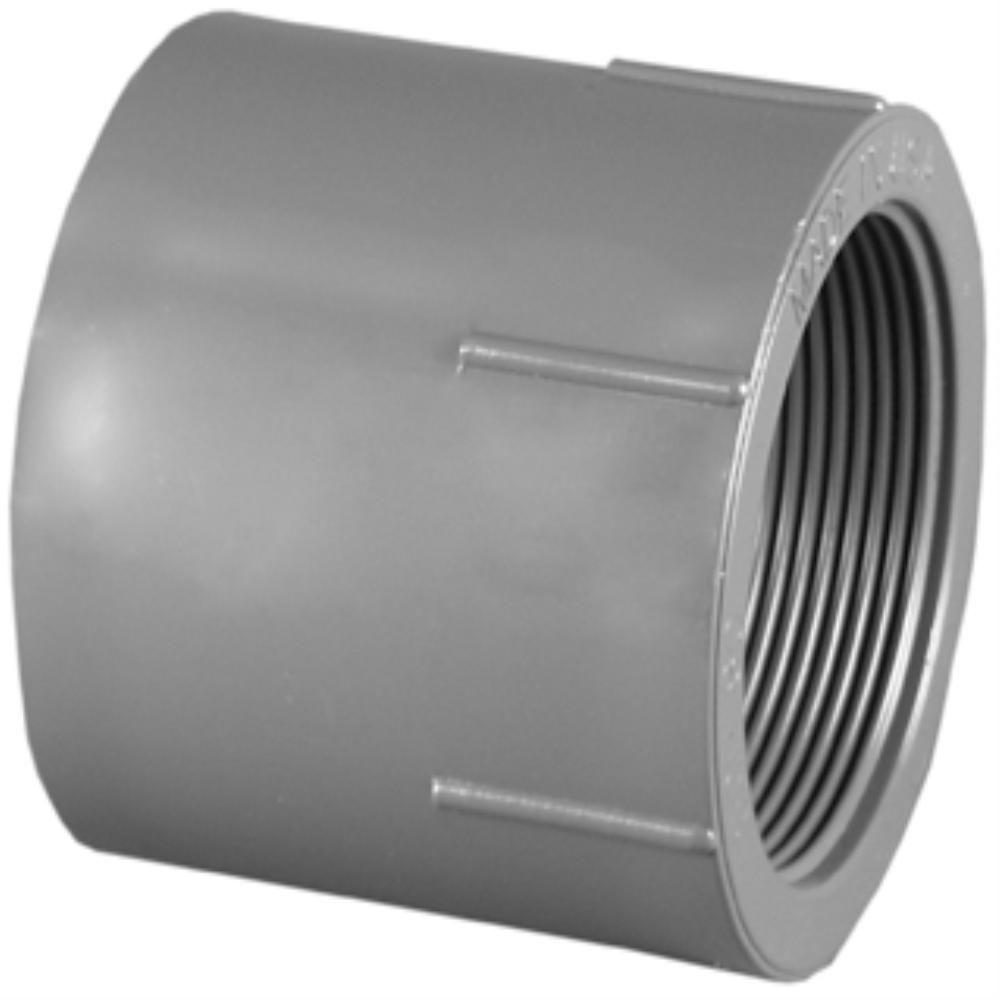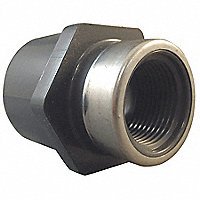And for further clarification...in the last few exchanges we're both talking as if I were going straight from pvc pipe glued into one female adapter that will be threaded into the bottom of the hydrant with a nipple (be it PVC, PP, brass, or galvanized). That's actually not the case. I'll be gluing one female adapter fitting onto the 3/4 PVC pipe indeed...but from that point onward there will be a plethora of threaded 90° elbows and nipples. The 3/4 branch pipe will be in a trench 24" deep.....but the hydrant will be one of the 6 foot long models buried 3.5 feet in the ground.....I like the mechanical stability of having them buried deep (no concrete, hard tamped clay only). So at the end of the PVC pipe branch run there will be a post hole dug another 18". Then a street 90, then a 12" and a 6" nipple with a coupling between them, then a 90, then a horizontally placed nipple, then a final street 90 into the hydrant. The last time I put a hydrant in this was all done with brass.....I didn't trust glued schedule 40 PVC elbows and pipe to stand up to all the potential flexing that gets put on these hydrants by cattle sometimes. I even used 8 feet of 3/4 copper pipe with male npt adapers soldered on both ends as my branch line to try to isolate the PVC main line as much as I could from any physical stress from the hydrant getting flexed around. In retrospect it seems a little overkill.....so I'm looking at an all plastic set-up. I still don't trust glued schedule 40 PVC elbows down in the post hole.....which is why I'm asking about using all the polypropylene schedule 80 threaded fittings (or maybe even schedule 80 PVC threaded fittings). Perhaps this is ALL overkill. Would YOU mechanically trust glued schedule 40 PVC elbows all around this hydrant? Assuming one schedule 80 PVC male adapter at the bitter end going into the hydrant.
And while on that subject, would you trust a PVC schedule 40 MALE adapter to thread into the bronze female at the bottom of the hydrant. It's written everywhere that one shouldn't thread a metal male into schedule 40 PVC female threads due to expansion. I've always felt that the male threads on a schedule 40 PVC male adapter were too thin and brittle to be trusted when screwed into a brass female fitting. Any logic there?


